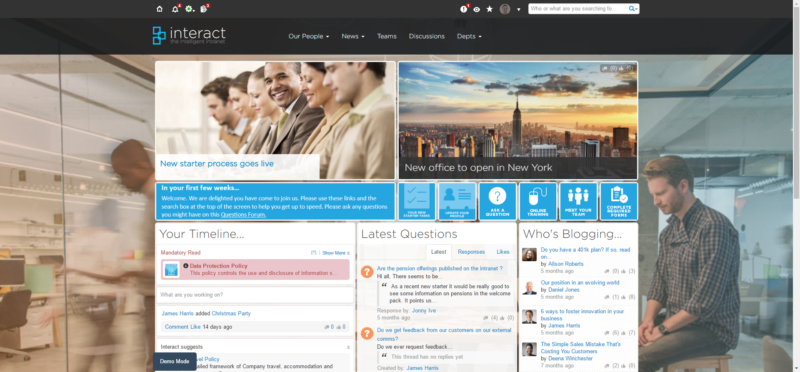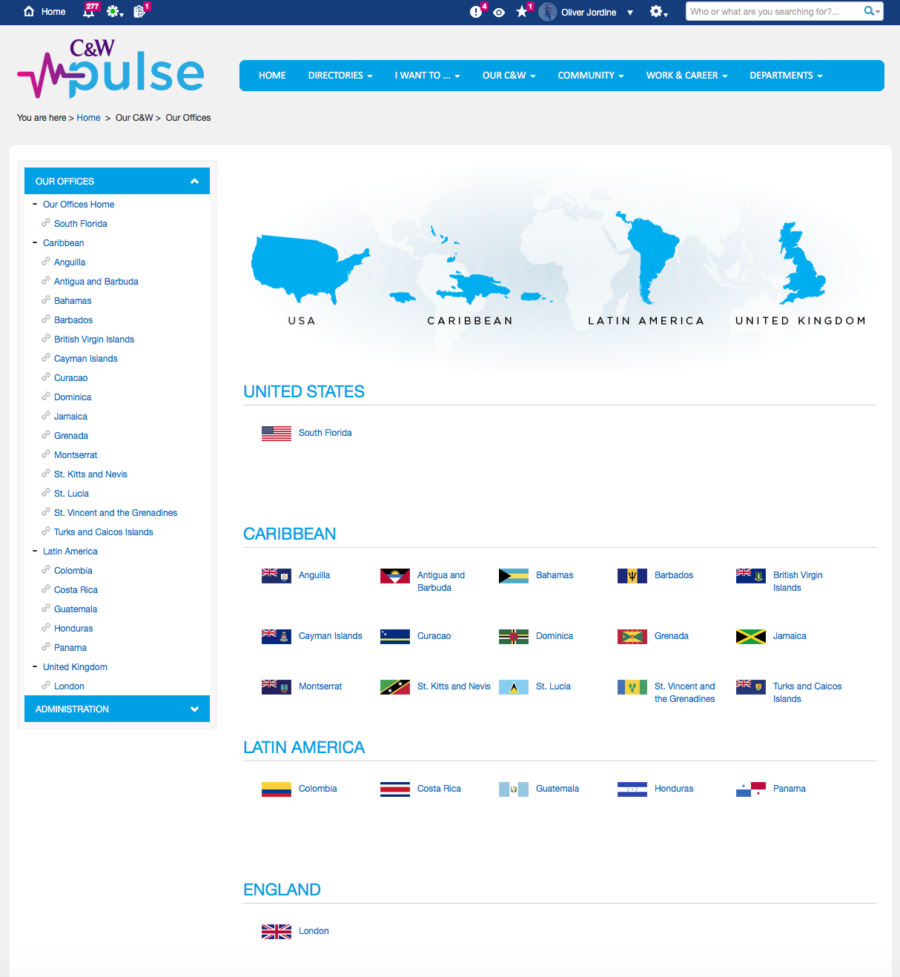The famed author Nathaniel Hawthorne once said, “Words – so innocent and powerless as they are, as standing in a dictionary, how potent for good and evil they become in the hands of one who knows how to combine them.” Hawthorne’s statement reflects on the power of communication to take seemingly meaningless sounds, endow them with significance, and in the hands of the articulate to wield them in grand acts of rhetoric that ultimately drive others to change the world around them. For better or for worse, language holds great power.
Nowhere is this clearer than in the modern workplace. 83% of respondents to a recent ATD poll stated that communication is the most important skill for success as a manager. What’s more, a Gallup poll cited employees as being three times more engaged when managers held regular meetings with their teams. To put the importance of communication at work in terms of the bottom line, a Project Management Institute study found that for every $1 billion spent on projects, $75 million of that is put at risk by poor communication.
Free ebook – 14 steps to great internal communication
The changes technology is bringing to the workplace are making a focus on communication even more necessary. 37% of US employees now work from home or telecommute at least part of the time, according to a second Gallup study. That means that far fewer communications are face to face, as the norm used to be. Email and other forms of online interaction, such as using company intranets, are emphasized much more as a result of those circumstances. Because of that, what constitutes “good” communication also has changed. Tone of voice and body language are no longer available to assist in conveying meaning. In addition, the globalized work environments that have been become the new normal mean interacting with coworkers from a wide variety of cultures, who may have different expectations in the office. Communication savvy workers are more necessary than ever as they need to understand the intricacies of interaction in order to properly navigate the uncharted territories of the modern work environment.
Communication permeates the office, and almost every situation imaginable benefits when it’s done well or suffers when it’s done poorly. That’s the reality of working with others on a team. Here are 5 situations that arise every day, when communication is especially important.
1. Transparency
Transparency is the key to trust, and trust is fundamental to engagement and collaboration. This means letting employees see the warts on the organization and the constant work of self-improvement. Making sure everyone has a behind the scenes look into how the organization functions, how decisions are made, and what their results are is fundamental as a leader. Even as a junior level employee, ensuring that one’s processes are as transparent as possible maximizes the potential for learning and growth. When done well, transparency can also assure everyone in your organization that they have a voice and that they’re valued. There are some very simple steps you can take to ensure transparency. They include keeping an open door policy and informing others of the steps you’re taking in any projects with which they are also involved. Have faith in your employees as well – you never know what groundbreaking suggestions they may have once they are comfortable with the amount of transparency that’s been introduced!
REI, the outdoor recreation retailer, makes use of social media to promote transparency among its employees and management. They hold “company campfires” in which high level executives and senior staff discuss their ideas and initiatives. Importantly, all other employees are encouraged to share their views and ask questions during these events. This creates a dialogue among all members of the organization about its inner workings and shows employees that their views are valued.
2. Developing new employees

Interact offers a custom homepage for all new starters
Onboarding is essential in building good collaboration habits. Every new employee has a learning curve, but getting them in tune with processes that are important to your team from day one will ensure that they quickly mature into high impact contributors. Be understanding of their position, but give feedback and nudge them in the right direction. The onboarding process ideally begins even before the start date, with managers reaching out to new employees and including them on all team communications. By the time a new hire’s first day comes around, they should have already been briefed and partially trained so that they can hit the ground running, learning as they work.
Having a mentor contributes greatly to an employee’s ability to assimilate seamlessly to a team and become productive quickly. In this case, communication between the new hire and that mentor is invaluable in answering the new hire’s questions and setting an example for them of how to fit into the team as a powerful contributor. Mentors need not be senior to the new employee, and they need not even be from the same team. What matters is that they exemplify the company culture and brand, understand organizational goals and how each department furthers those goals, and that they are able to make themselves available to build a relationship with the new employee.
Free ebook – 14 steps to great internal communication
The M.D. Anderson Cancer Center has an impressive mentoring program for younger employees. They help those workers to define and further their professional goals, as well as connecting them with colleagues who may be important to their careers down the line. In this way, the M.D. Anderson Cancer Center uses communication from mentors to expertly invest in their newer employees. They understand that these employees are the future of the organization, and they equip them with all the tools they need to make that future meaningful.
3. Operating in a globalized office

Cable and Wireless use their intranet to facilitate communication between their global offices
As we previously discussed, the modern office is globalized and operates across borders in a way that was never previously possible. This is thanks in part to email but also to enterprise social networks, intranets, and cloud technology. The cloud in particular allows for instantaneous communication and collaboration. Now, a worker in Hong Kong can collaborate in real time with their colleague in New York City. The pitfalls of this new type of communication and collaboration are not to be taken lightly – written communications must be very clear to make up for the lack of face to face interaction, and cultural differences must be understood and accounted for so as to avoid potentially serious conflicts.
At the same time, the risks of this new reality are outweighed by the fact that productivity has benefitted greatly. Employees no longer are tied to their desks and therefore have fewer restrictions on what makes them able to productively collaborate. A greater pool of talent and knowledge are available to all organizations, as are the tools to harvest them. Quickly finding a coworker who is an expert in tax law or fluent in German is possible, whereas it would have been an unrealistic feat in past years. As long as the knowledge exists at a company, it is accessible regardless of geography.
SoundCloud, the online audio distribution platform, makes use of an intranet to connect their own globalized office. While the company has its headquarters in Berlin, Germany, they have offices in four different time zones and continue to be one of the most successful companies in their field. Their communications team is able to ensure that each office has its voice heard and that employee engagement initiatives are consistent and hold the voices of all workers in equal esteem. Moreover, they are able to initiate smaller and more intimate conversations among offices through their intranet. An intranet that has a Teams feature enables this kind of communication, which is crucial to working well with distributed offices.
4. Communicating company news (good or bad)

An intranet homepage provides the ideal platform for important employee communications
This point goes hand in hand with transparency, which was mentioned earlier as point number one. At a very basic level, employees all have the right to know how their organization is performing and any major changes that may be on the horizon. They may wish to get updates not only about their own department but about others – this is a sign that they care about the overall health of the company beyond their own position, which should be encouraged. Outside of the right of employees to company news, keeping everyone informed of performance and major changes means they are better equipped to understand the company’s overall goals. When they know company goals, workers and managers can tailor their performance and tasks to support those goals. In that way, keeping employees informed is good for the short and long term overall performance of the organization.
Oscar Suris, Head of Corporate Communications for Wells Fargo, recently answered some questions for PR News Online about internal communications at the banking giant. He says, “Each year, we survey thousands of team members to gauge their satisfaction with internal communications. They’ve been clear: When there’s news, good or bad, they want to hear it promptly from their employer via the company’s internal communications channels.” Suris goes on to explain that delivering their news in a timely manner is very highly correlated with employee satisfaction with internal communications.
5. Change management
Every company goes through changes at some point. That’s the hallmark of organizational growth, something that every business strives for. Beyond simply communicating that there will be change, successful organizations will practice good communication throughout the process of change and make it a hallmark of their change management strategy.
Jamie Sandys, the National Communications Specialist at Make-A-Wish, wrote a recent blog post for Interact on the change management strategy they used when deploying a new intranet. Sandys wrote, “With the advisory team in place, we turned toward communicating with the rest of the Make-A-Wish employees. We developed a tiered communication strategy that provided different levels of detail on the project to different groups, depending on the group’s involvement and relevance. The Senior Leadership Team might receive a monthly update with timeline and budget information; whereas the larger employee group may only receive quarterly updates as reminders about the project. Overall, the communications goal was two-fold: 1) to make sure no one was taken by surprise about the project and 2) to educate everyone on why the site was needed and, most importantly, how it would benefit them.”
Ultimately, their Communications team’s effort led to impressive overall adoption, and their intranet continues to be used today. Their story is illustrative of how powerful communication can be used to accomplish a variety of organizational goals.
Regardless of what type of initiative a business is introducing, communication has to be a piece of the strategy. From the smallest components, such as every day collaboration, to introducing organization-wide changes communication is nine tenths of the battle.

